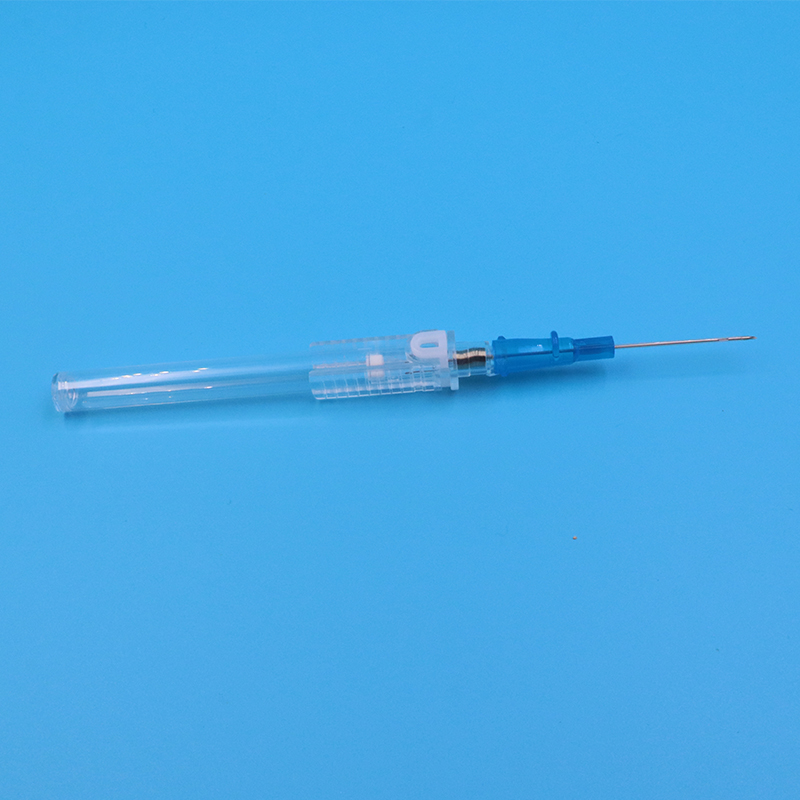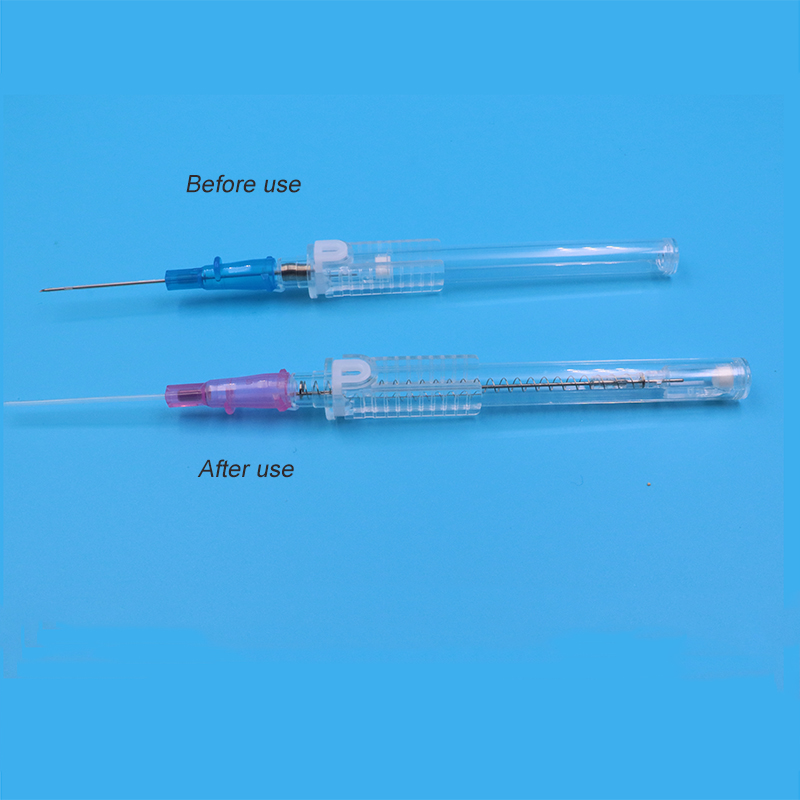Intravenous catheterization is a common procedure in medical settings, but it is not without risks. One of the most significant risks is accidental needlestick injuries, which can lead to the transmission of blood-borne diseases and other complications. To address this risk, medical device manufacturers have developed the pen type retractable safety IV cannula catheter.
The needle on this type of catheter is retractable, which means that once it is inserted into the vein, the needle can be safely retracted into the catheter. This eliminates the need for medical professionals to manually remove the needle by hand, reducing the risk of needlestick injuries.
In addition to its retractable needle, the pen type retractable safety IV cannula catheter has several other notable features and advantages. For example:
1. Ease of use: The catheter is designed to be easy to use, with a simple one-handed operation for needle insertion and retraction.
2. Compatibility with standard IV catheterization procedures: The catheter is compatible with standard IV catheterization procedures, making it easy to integrate into existing medical protocols.
3. Improved safety: By reducing the risk of needlestick injuries, the catheter improves the safety of both medical professionals and patients.
4. Reduced costs: Needlestick injuries can be expensive for healthcare providers, leading to increased costs for both the provider and the patient. By reducing the incidence of needlestick injuries, the catheter can help to reduce these costs.
The function of the pen type retractable safety IV cannula catheter is simple: it provides a safe and effective means of intravenous catheterization. Because the needle is retractable, it reduces the risk of needlestick injuries, which can lead to a range of medical complications. This makes the catheter a valuable tool for medical professionals who need to perform intravenous catheterization procedures on a regular basis.
One of the key advantages of the pen type retractable safety IV cannula catheter is its ease of use. The catheter is designed to be used with one hand, which means that medical professionals can easily perform the procedure without requiring assistance. This makes the procedure faster and more efficient, which is particularly important in emergency situations where time is critical.
The catheter is also compatible with standard IV catheterization procedures, which makes it easy to integrate into existing medical protocols. This means that medical professionals do not need to undergo additional training or learn new procedures to use the catheter, which reduces the amount of time and resources required to implement it in a medical setting.
In addition to its ease of use and compatibility with existing procedures, the pen type retractable safety IV cannula catheter is also designed to improve the safety of both medical professionals and patients. By reducing the risk of needlestick injuries, the catheter helps to protect medical professionals from blood-borne diseases such as HIV and hepatitis. It also reduces the risk of other complications such as infection and inflammation, which can occur when the needle is not safely removed.
Furthermore, the catheter can help to reduce costs for both healthcare providers and patients. Needlestick injuries can be expensive to treat, and they can result in lost wages and reduced productivity for medical professionals. By reducing the incidence of needlestick injuries, the catheter can help to reduce these costs and improve the overall efficiency of medical procedures.
In conclusion, the pen type retractable safety IV cannula catheter represents a significant advance in medical device technology. Its retractable needle, ease of use, compatibility with standard IV catheterization procedures, improved safety, and reduced costs make it an ideal choice for medical professionals seeking a safer and more effective means of intravenous catheterization. As such, it is likely to become an increasingly important tool in medical settings around the world.
Post time: Jun-19-2023



